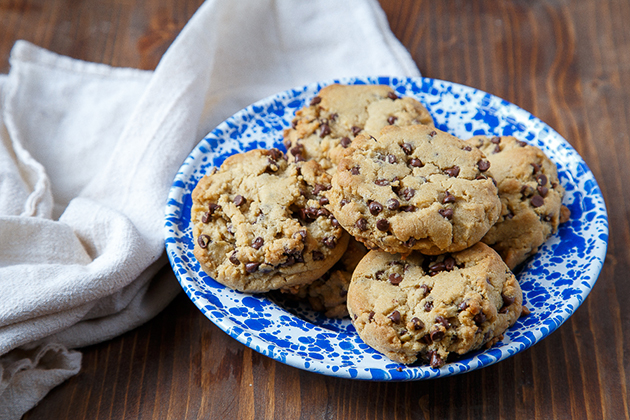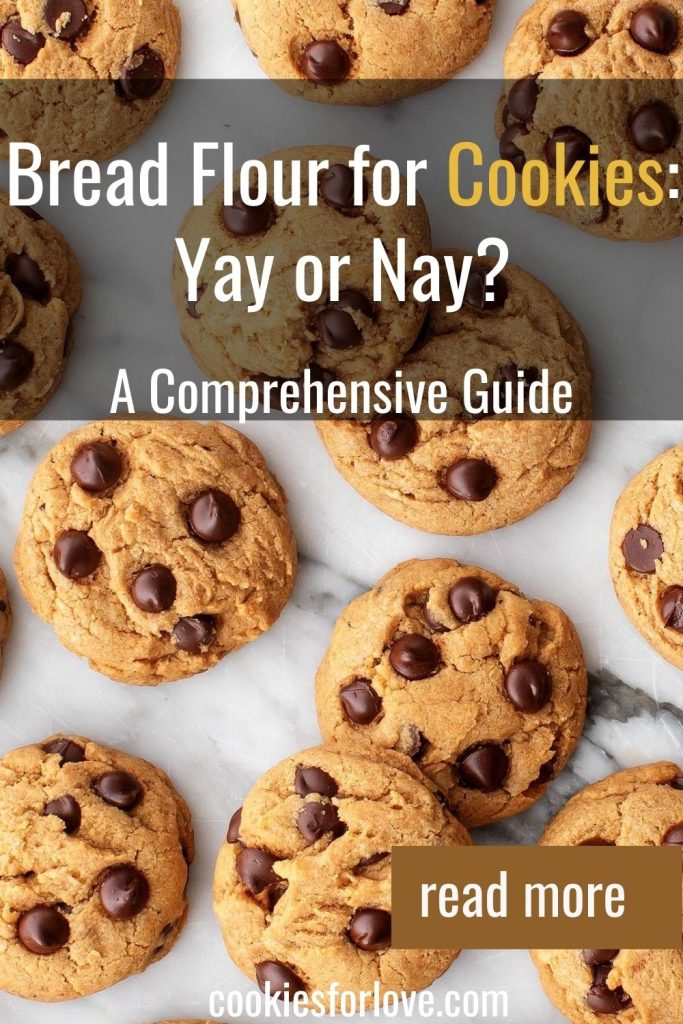Are you looking for a way to make delicious, soft cookies without the expense and time of an expert baker? Look no further! The secret is in using bread flour. But can you really use this type of flour for baking cookies? You may have heard there are some difficulties with doing so, but don’t let that keep you from experimenting in the kitchen. Our blog post will help you unlock the secret to success with baking cookies using bread flour as well as provide helpful tips and tricks to get scrumptious results every single time!

Table of Contents
Introduce the benefits and advantages of using bread flour to bake cookies
Bread flour is an ideal choice for baking cookies. Its higher protein content makes it a great option for creating a chewy texture and a more substantial cookie. The higher gluten content helps create a better structure that keeps the cookie from spreading out too much during baking.
Another advantage of using bread flour in cookie recipes is that it can increase the shelf life of the finished product by helping them keep their shape and form longer.
Additionally, the extra protein in bread flour helps hold onto moisture, so your cookies will stay soft and delicious even after they’ve been stored for several days. All of these advantages make bread flour an excellent choice when baking cookies, either as a substitute or as an addition to traditional all-purpose flour.
Can You Use Bread Flour For Cookies?
Yes, you can use bread flour for cookies.
Bread flour has a higher gluten content than all-purpose flour which gives it more protein and structure. The result is chewier cookies with a slightly denser texture that are ideal for those who enjoy chewy, dense treats.
When using bread flour in cookie recipes, you may need to adjust the amount of liquid ingredients, such as butter or eggs, for the best texture.
How to Use Bread Flour for Baking Cookies
When it comes to baking cookies, bread flour is a great choice for achieving that perfect texture and flavor. Bread flour has higher amounts of protein than all-purpose flour, resulting in more gluten production when combined with liquid ingredients. This increased gluten formation gives baked goods more structure and chewiness, which is something you want in a cookie.
To use bread flour to bake cookies, start by sifting your flour before measuring it out.
- Doing this will remove any lumps, making sure the dough is evenly mixed.
- Then measure out 1 ¼ cups of bread flour per batch of cookies and combine it with other dry ingredients, like baking powder or baking soda and salt.
- Once the dry ingredients are fully incorporated into the dough, add butter or shortening and mix until the dough forms a crumbly texture.
- Next add liquids such as eggs or milk until a thick dough has formed.
- Roll out the cookie dough on a lightly floured surface to about ¼ inch thick and cut into shapes using cookie cutters or shape with your hands before placing them onto parchment-lined baking sheets.
- Bake at 375 degrees Fahrenheit for 8 – 10 minutes (depending on size), or until golden brown around the edges. Allow them to cool before enjoying!
Using bread flour instead of all-purpose will create chewier textured cookies that stand up better over time without becoming too chewy or tough after being stored in an airtight container.
Not only that, but they’ll also have a sweeter flavor since bread flour has higher amounts of sugar than all-purpose flours do! So if you’re looking for some delicious and perfectly structured cookies, then don’t hesitate to replace traditional all-purpose flours with bread flour when baking your next batch!

Tips & Tricks for Perfect Cookies Every Time
Baking cookies with bread flour is a great way to get that perfect texture and flavor that you’re looking for. However, it can be tricky to get right. To ensure success every time, there are a few tips and tricks that you should keep in mind when baking cookies with bread flour.
First and foremost, when measuring out your ingredients, make sure to use the “scoop and sweep” method. This means using a scoop or spoon to gather up the flour from the container and then using a butter knife or other straight-edged tool to level off the top of the scoop. This will give you an accurate measurement of flour for each cookie batch.
Additionally, it’s important to remember that more than just the amount of flour matters – you’ll also want to take into account the type of flour being used as well. Bread flour tends to absorb more liquid than all-purpose flours do, so if you’re following a recipe that calls for all-purpose flour but are substituting it with bread flour, you may need to add a bit more liquid (in this case water or milk) in order to get your dough consistency just right.
Read more:
Another key trick when baking cookies with bread flour is getting the dough temperature just right before baking – too cold and they won’t spread properly; too warm and they can become too crisp. For best results, allow your cookie dough to set at room temperature for 30 minutes before baking – this will help create soft yet sturdy cookies that won’t crumble apart when cooled.
Finally, pay attention to how much time your cookies spend in the oven – most recipes call for about 10-15 minutes but with bread flour, you may want to extend this slightly (by 1-2 minutes) in order for your cookies to be baked through without becoming overly crisp or hard on the edges.
By keeping all these tips in mind when baking with bread flour, you can be sure that every batch of cookies will come out perfectly delicious every single time!

Conclusion
Baking delicious, fluffy and flavorful cookies with bread flour can be a delightful experience. Now that you are armed with the necessary information for using the right ingredients and technique, your kitchen will be filled with heavenly aromas as your cookies come out of the oven. Whether you are churning out savory spiced gingerbread or classic choc-chip treats, you can rest assure that every batch will have perfect results if you follow the steps outlined in this blog post. So, go ahead and embrace your inner baker to create scrumptious bites to share with your friends and family – they won’t believe their tastebuds! For more helpful baking tips and tricks, please read more here.
References:
https://www.sciencedirect.com/science/article/abs/pii/S0260877406001427









